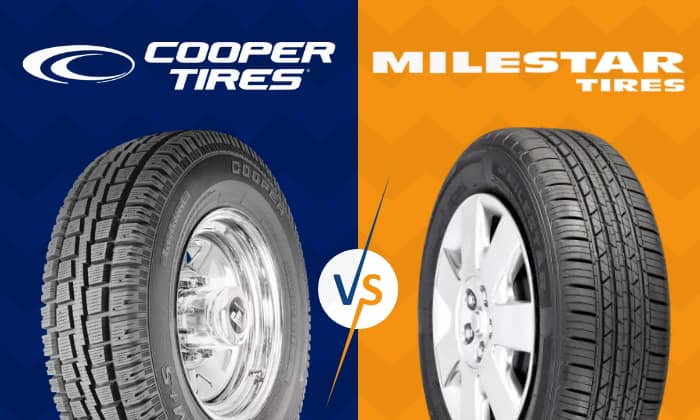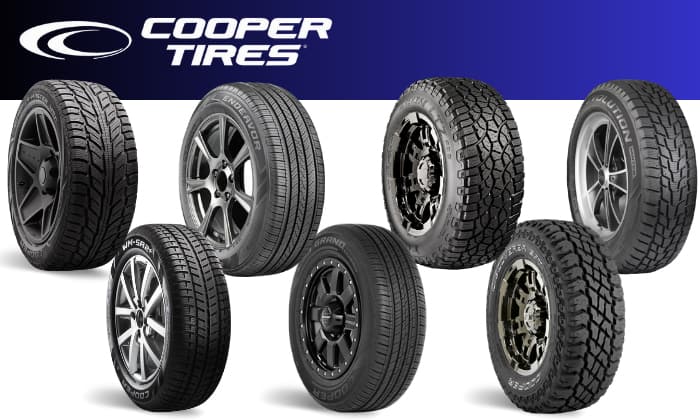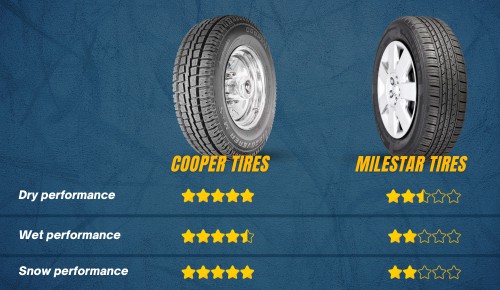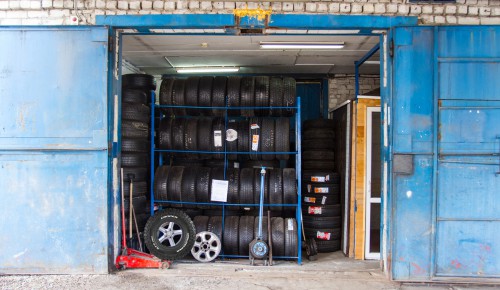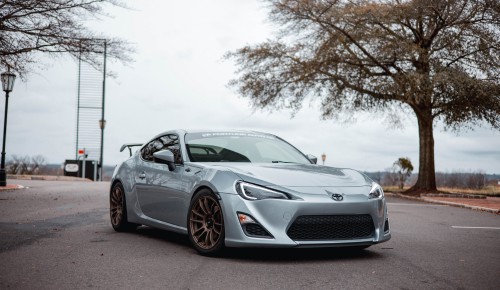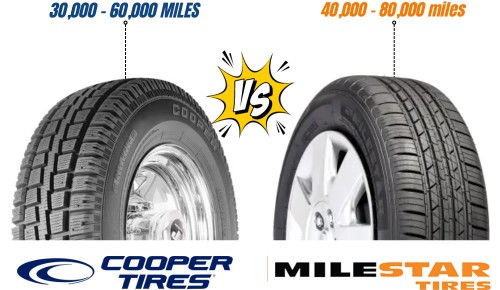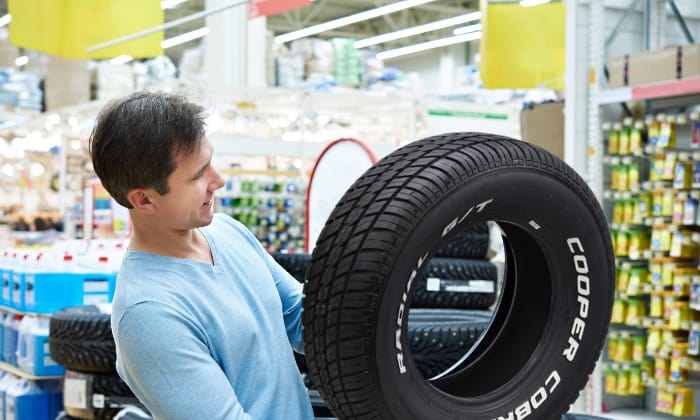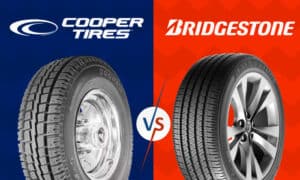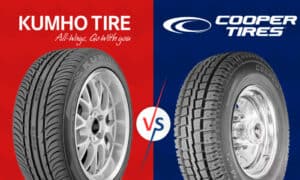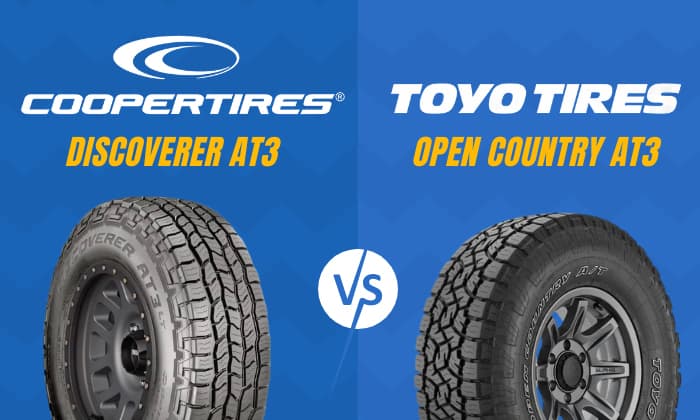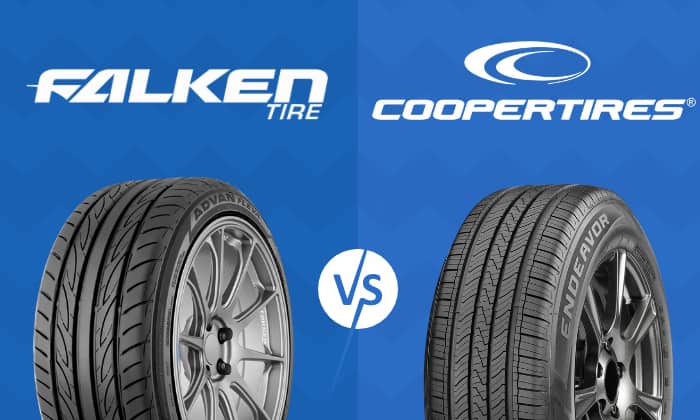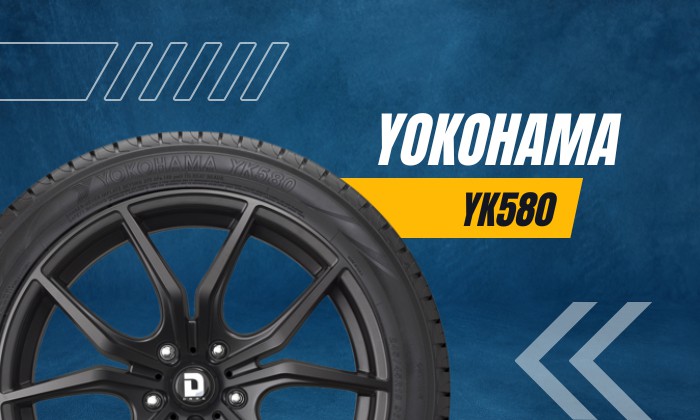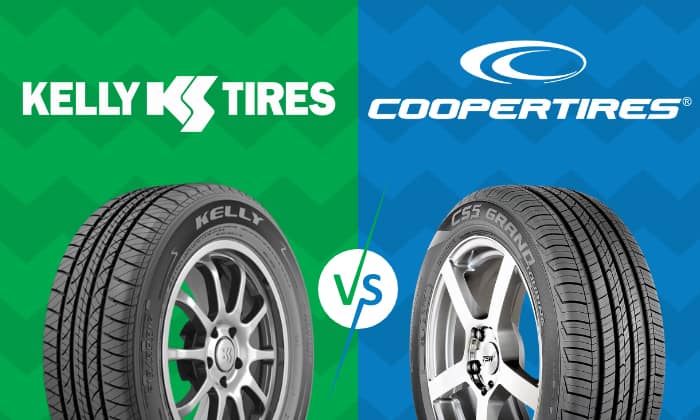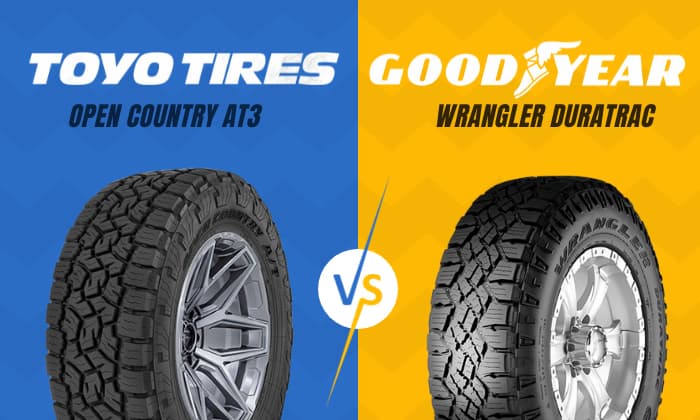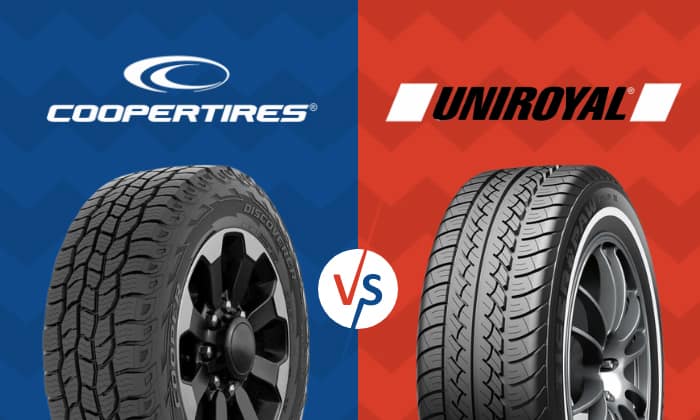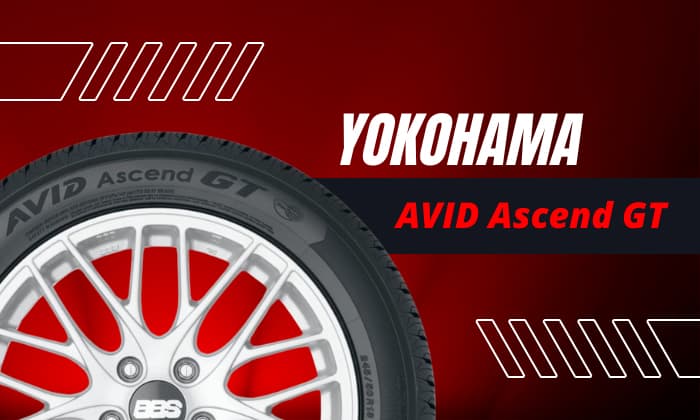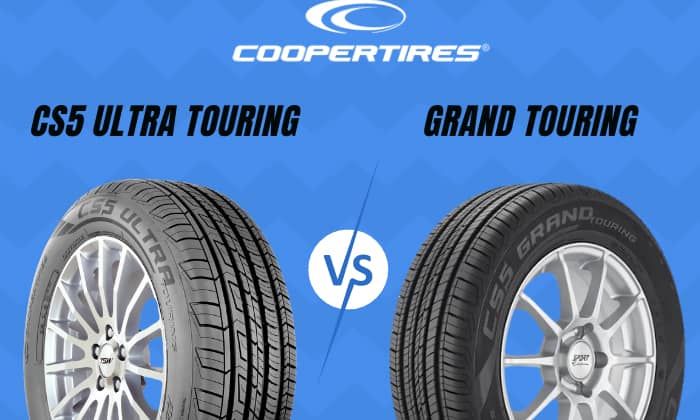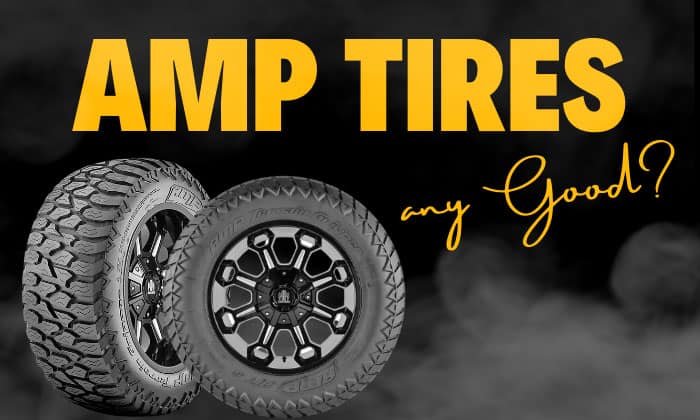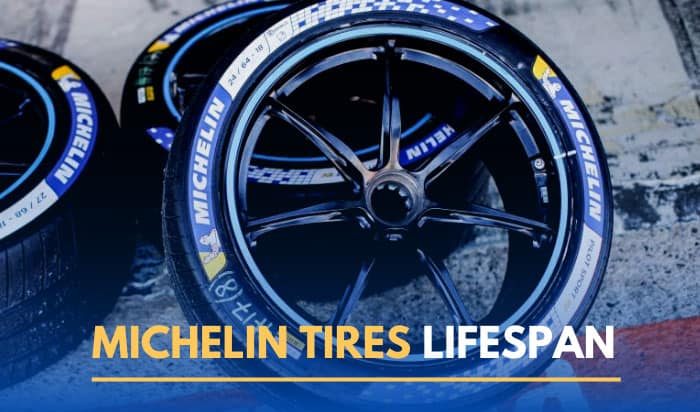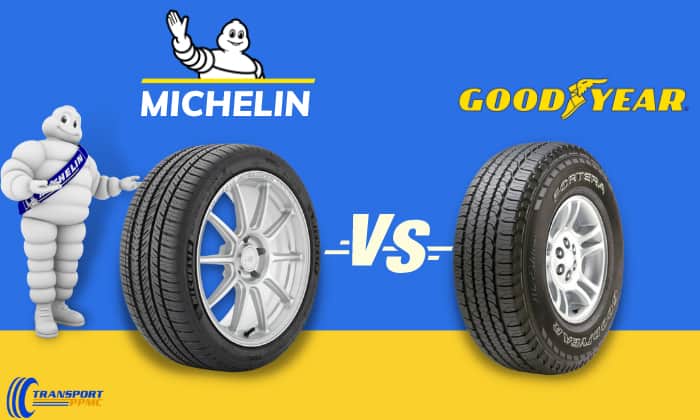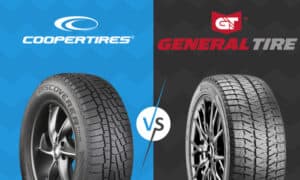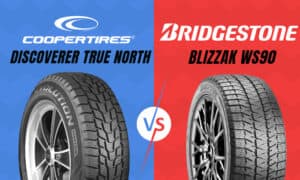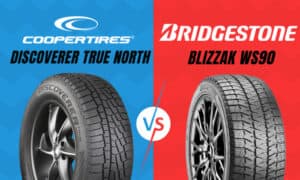Cooper vs. Milestar tires is a big topic for car lovers due to the reputation of both brands. Cooper tires last long and are tough. Meanwhile, Milestar tires are quiet, smooth, and cost less.
Below is a quick comparison table between Milestar and Cooper tires.
| Cooper Tires | Milestar Tires | |
| Performance | Above Average | Average |
| Tire Variety | Superior | Average |
| Durability | Superior | Below Average |
| Ride Comfort | Average | Above Average |
| Tread Life | Superior | Average |
| Cost | Budget-friendly | Budget-friendly |
To give you a complete picture of both brands, we’ll provide an in-depth review of Cooper and Milestar below.
Table of Contents
Overview of Cooper Tires
Established in 1914 in Akron, Ohio, Cooper Tires was founded by Claude E. Hart and John F. Schaefer. Initially only offering tire repair solutions, they then acquired the Giant Tire & Rubber Company for production.
Cooper Tires focuses on off-road tires. While they have an expansive range catering to diverse vehicles, they’ve significantly marked their territory in the 4WD tire segment.
This brand features up to 7 tire families: WeatherMaster, Endeavor, Zeon, Evolution, WM, CS, and Discoverer. Their product ranges can cater to different needs, including all-season, all-terrain, touring, winter driving, light trucks, commercial trucks, sports vehicles, etc.
Overview of Milestar Tires
Emerging in 1972, Milestar Tires is a subsidiary of Nankang Rubber Tire Co. Ltd. This brand has delivered quality performance passenger, light truck, and commercial radial truck tires for nearly five decades.
Initially only made in Taiwain, Milestar has now branched out its production to the US. The The WeatherGuard AS710 was their first-ever American-made tire.
Milestar doesn’t really have any tire families, as its products are categorized according to the vehicles they’re intended for. The tires the brand offers are designed for passenger cars, light trucks, and commercial trucks.
Differences
1. Performance
Both Cooper and Milestar tires are aiming for high-performance tires at affordable prices. However, Cooper Tires is the clear winner between the two.
- While Copper excels at dry performance thanks to its unique bead filter design, Milestar’s grip and traction are rather average—expect the handling and steering response to get worse if you drive at a fast speed.
- Milestar generally doesn’t do well on wet roads and has disappointing aquaplaning resistance despite having viable siping and open shoulder blocks.
Meanwhile, most Copper tires feature a five-rib design and wide Aqua Vac Channels, thus giving them great hydroplaning resistance and decent wet grip.
- As for snow performance, Copper knocks Milestar out of the park, as their winter and mud tires’ biting edges can provide superb grip and handling.
In contrast, as pointed out by many Milestar tires reviews, the brand doesn’t do well on snow- or ice-covered roads, as their tires’ handling and braking distance are somewhat subpar.
2. Tire variety
Cooper has the edge regarding tire variety on Milestar. The brand can cater to different driver requirements, such as winter conditions and off-road areas.
Milestar can only provide the most basic driving requirements, considering that its tire families are rather limited.
3. Durability
Milestar tires often have lower UTQG ratings—the highest they can achieve is 540 with their Performance Touring All-Season, suggesting they wear out faster. The low safety rating makes them a fit for drivers who don’t push their cars too hard.
Cooper tires rating can reach up to 780AB. Most of their product lines are rated 600 and above, except Cooper Trendsetter SE, whose UTQG rating is only 400.
4. Tread life
Cooper tires are highly confident in the quality build of their tires, which is why the average mileage warranty of their tires is around 40,000 to 80,000 miles.
Meanwhile, Milestar can only guarantee their tires will last 30,000 to 60,000 miles. In this case, Cooper takes the lead.
5. Ride comfort
Many drivers find Milestar tires more comfortable for daily use. They’re known for their smooth, quiet ride, making them a favorite for city driving.
Cooper tires, while robust, are not always the go-to for comfort. Drivers who have used their tires noticed intense noise while driving. This shortcoming is due to the lack of technology that prevents the air from hitting the side of the tires.
6. Cost
Both tire brands are known for their affordable prices, with Milestar being marginally more affordable than Cooper tires. Whereas the former’s price range is $48 to $352, the latter’s is $77 to $353.
Pros and Cons
1. Cooper tires
- Exceptional stability and steering
- Wide range of tires
- High UTQG rating and trusted durability
- Tires are less comfortable and generate too much noise
2. Milestar tires
- Better ride comfort
- Low noise
- Affordable prices
- Poor performance in wet and winter conditions
- Lacking durability
Which Tire Brand is Better?
Cooper Tires takes the crown for its wider tire variety, better high-speed stability, and superior durability in the head-to-head comparison. The brand is a go-to choice for those prioritizing long-term value over short-term savings due to their tire’s qualities.
There is also the question of the brand’s reliability, and many are favoring Cooper as well. For example, in most discussions on the Cooper STT Pro vs. Milestar Patagonia, the brands’ off-road tires, many tend to recommend the former due to their reliability.
Milestar is a good choice for budget-conscious consumers. It can accommodate light use and provide daily commuters with a smooth and noiseless driving experience.
Conclusion
To summarize the Cooper vs. Milestar Tires comparison, the former is the winner. Cooper Tires is ahead of the competition with its product’s performance, durability, and wide range of tire lines.
However, Milestar is still a noteworthy choice due to their tires’ affordability and comfortable driving experience.



